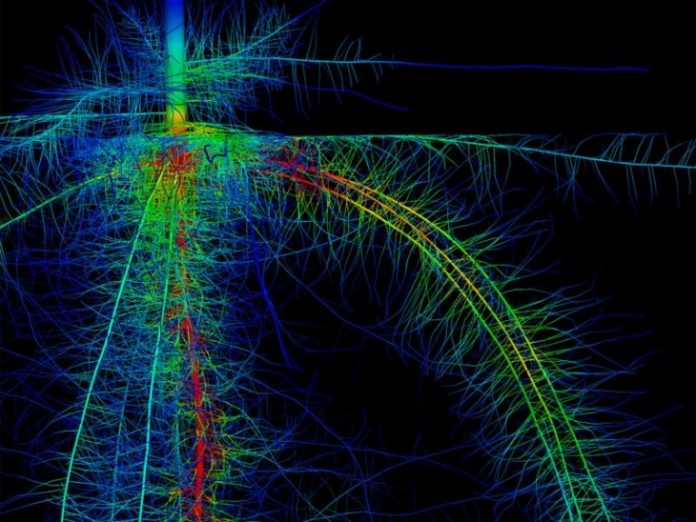
UNIVERSITY PARK, Pa. — Researchers in Penn State’s College of Agricultural Sciences have received a $7 million grant from the U.S. Department of Energy’s Advanced Research Projects Agency-Energy, or ARPA-E, to design a low-cost, integrated system that can identify and screen for high-yielding, deeper-rooted crops.
The interdisciplinary team, led by Jonathan Lynch, distinguished professor of plant nutrition, will combine a suite of technologies designed to identify phenotypes and genes related to desirable root traits, with the goal of enhancing the breeding of crop varieties better adapted for nitrogen and water acquisition and carbon sequestration.
Carbon accumulation
The project is part of ARPA-E’s Rhizosphere Observations Optimizing Terrestrial Sequestration, or ROOTS, program, which is aimed at developing crops that enable a 50 percent increase in carbon deposition depth and accumulation, while also reducing nitrous oxide emissions by 50 percent and increasing water productivity by 25 percent.
“ARPA-E invests in programs that draw on a broad set of disciplines and require the bold thinking we need to build a better energy future,” said ARPA-E Director Ellen D. Williams. “ROOTS projects will help us find crops that trap carbon into the soil and reduce the need for costly, emissions-heavy fertilizers.”
While advances in technology have resulted in a tenfold increase in crop productivity over the past century, soil quality has declined, leading to a soil carbon debt equivalent to 65 parts per million of atmospheric carbon dioxide.
This soil carbon debt increases the need for costly nitrogen fertilizer, which has become the primary source of emissions of nitrous oxide, a greenhouse gas. The soil carbon debt also impacts crop water use, increasing susceptibility to drought stress, which threatens future productivity.
Given the scale of domestic and global agriculture, there is potential to reverse these trends by harnessing the photosynthetic bridge between atmospheric carbon, plants, microbes and soil.
Improving soil
Advanced root systems that increase soil organic matter can improve soil structure, fertilizer use efficiency, water productivity, crop yield and climate resilience, while mitigating topsoil erosion — all of which provide near-term and sustained economic value.
“Development of new root-focused plant cultivars could dramatically and economically reduce atmospheric CO2 concentrations while improving productivity, resilience and sustainability,” Lynch said. “With ARPA-E’s support, we plan to create DEEPER, a revolutionary phenotyping platform for deeper-rooted crops, which will integrate breakthroughs in nondestructive field phenotyping of rooting depth, root modeling, robotics, high-throughput 3-D imaging of root architecture and anatomy, gene discovery, and genomic selection modeling.”
Lynch noted that an innovative sensor application will allow the researchers to measure leaf composition with X-ray fluorescence and use it as a proxy for rooting depth.
The team also will develop an automated imaging system for excavated roots — enabling identification of their architectural traits — and will enhance a laser-based imaging platform to determine root anatomy.
Researchers will develop and deploy these highly synergistic technologies with hybrid maize grown in the field under drought and nitrogen stress and under nonstressed conditions.
Contributing data
In addition, they will contribute data to a nationwide dataset used to study the interactions between genes and the environment.
“The combination of these technology platforms with advanced computational models developed for this program will allow us to determine the depth of plant roots, enabling better quantification of root biomass,” Lynch said. “DEEPER will provide validated genes and genomic selection models to deploy traits for deeper rooting in maize breeding, with an eye toward developing new crop ideotypes and cultivars that can be adopted rapidly for commercial cultivation.”
STAY INFORMED. SIGN UP!
Up-to-date agriculture news in your inbox!









